Electrical safety is typically one of the main safety concerns at construction sites. Every construction site is covered with electrical hazards. Electrical safety is a general practice of workers who are exposed to handling and maintaining electrically powered equipment and using electricity in construction site. This blog takes a closer look at some common workplace electrical hazards and how to manage them. In addition, this blog discusses safety precautions and solutions for better electrical safety.
A simple flow chart for ensure electrical safety at workplace and achieve zero electrical accident.
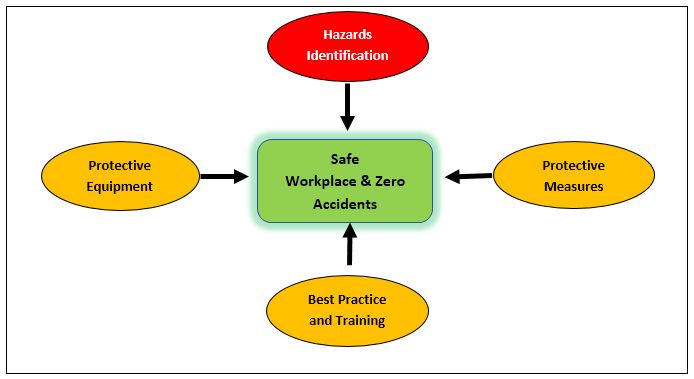
The first step in improving electrical safety for construction sites is to make sure everyone is able to help identify electrical hazards. This can start with making sure everyone knows that they should treat all extension cords and other electrical equipment as if it had a live current going through it at all times. This simple procedure can help ensure that no one makes a mistake that leads to catastrophic harm or death. There are many other hazards that people need to be on the lookout for. The following are some common electrical hazards that can occur on a construction site:
- Open Joints in cable (Highly dangerous)
- Loose Fitting Plugs (Lead to shock/fire)
- Connection without proper plug and socket (Highly dangerous)
- Exposed electrical parts (Highly dangerous)
- Electrical wires/parts in water (Highly dangerous)
- Wires with bad insulation (Lead to shock/fire)
- Ungrounded electrical systems and tools (No protection)
- Overloaded circuits (Lead to short circuit/fire)
- Damaged power tools and equipment (Lead to shock/fire)
- Using the wrong PPE and tools (Lead to shock/injury)
- Underground cables (To be identified prior to start Excavation at any area.)
- All hazards are made worse in wet conditions.
There are many other potential electrical risks that can exist on a construction site. A site or safety manager should also perform regular inspections since construction sites are constantly changing as progress is made on the job.
Once we have identified all the different electrical hazards associated with a construction site, it is necessary to reduce or eliminate the hazards. Every worksite will require different actions to take place in order to improve the overall electrical safety situation. These are some of the protective measures that can help all companies/construction sites to minimize the risks and electrical accidents.
- Proper grounding
- Use fuses and circuit
- Using MCB/RCD/ELCB @ correct rating
- Guard live parts
- Lockout/Tagout
- Proper use of flexible cords
- Close electric panels
- Using Insulated Equipment/Tools/Ladders etc.
- Proper extension cord
- Personal Protective Equipment
- Proper identification of circuits/DB/Panels
- Best practice
- Toolbox meeting and Training
Improving Electrical Safety on Construction site
Conduct Risk AssessmentsElectrical safety risk assessment is one of the most important for preventing accidents and reducing overall risk. Prior to start any work/job, comprehensive risk assessment to be conducted to identify all the electrical hazards. Accordingly, appropriate safety plan and procedures/checklists to be prepared to prevent any mishaps.
Ensure employees have proper training in electrical equipmentThe first, and most important, thing that can be done in order to reduce the risks associated with electricity on construction sites is to provide proper training. Explaining exactly how dangerous electricity and how to use the electrical power safely. It is very important that everyone should have the basic awareness about the Electrical hazards, safety measures and electrical protective equipment as all are using electricity. Even a simple training session may be provided to all employees before they go to a construction site which can help to raise the baseline of knowledge for everyone working in the area.
Determine where electrical hazards areIn addition to the risk assessment, workers should be informed of the exact location of each electrical hazard on the job site. An efficient way of keeping track of all on-site hazards is by using project management system/software. This is one of several electrical safety tips at work that can save both time and money. When inspecting the site, the hazards in the area to be captured and take important notes regarding proper safety precautions. Once completed, the information to be saved to the network connecting across the job site to view and share, informing all on-site workers of the exact dangers and how to avoid them.
When it comes to electrical safety in construction, testing equipment is essential. To prevent shocks and other potentially fatal electrocutions, remember to use approved electrical power testing equipment. This allows to properly assess the level of risk of an operation. Test all wiring to double-check whether it is grounded, dead, or requires additional safety equipment. Acquiring and using high-quality testing equipment should be the first step in electrical safety plan. Such testing devices can include voltage detectors, clamp meters, and receptacle testers.
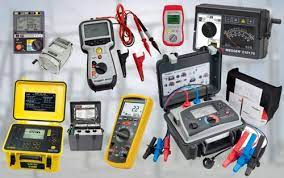
Providing any electrical supply with protective devices such as ELCB, surge arrestor can be crucial to ensuring safety on the job site. ELCBs are best to prevent shock. It detects small stray voltages on the metal enclosures of electrical equipment and interrupts the circuit if a dangerous voltage is detected. A surge protector are great tools for shutting down power during an emergency, and voltage regulators help to prevent equipment damage during electricity surges.
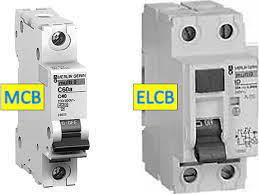
It’s important to use safe extension cords and outlet strips when working with electricity. Cable covers and cord protectors are another good way to practice safety in the electrical construction industry. Also, be sure to install floor cord protectors; not only to protect the lines running across a space. Also to prevent workers from tripping over loose cords.

As you should know, water and electricity don’t mix well. The presence of water significantly increases your chances of getting electrocuted when working with electrical equipment, especially if the equipment is poorly insulated. Wet electrical equipment should be inspected by a qualified electrician before turning the power back on to ensure complete worker safety. Eliminating wet conditions should be part of the electrical safety plan.
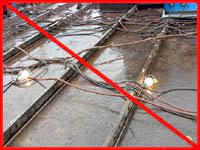
There are a lot of great workplace electrical safety precautions are there. However, this might be one of the most important, Personal protective equipment is your first line of defense to potential shocks that may occur while on the job. It is highly recommended that, when working in the electrical construction industry, wear always electrical gloves and footwear to protect from any random accidents that may fall through electrical safety plan.
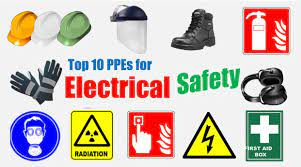
While working with wiring or in close contact with electricity the face shield, fire-resistant helmet, and other forms of eye and ear protection is must to ensure your safety. Safety should be the #1 priority on any construction site, especially those apart of the electrical construction industry. Electrical safety is always a concern. However, the all the electrical hazards and risk can be minimized through proper Hazards Identifications, proper Protective Measures, using appropriate Protective Equipment, Best Practice and Training.
Electrical Safety – A never ending process
When it comes to improving electrical safety for construction sites, it is important to ensure everyone knows that there is always more than can be done. Everyone should work together to identify risks and take steps to eliminate or reduce them as much as possible. Electrical safety always needs to be a priority from the moment people arrive on a construction site until the job is successfully completed. With proper training, using appropriate protective equipment and attention, it is possible to keep everyone safe from electrical shock while working at a construction site.